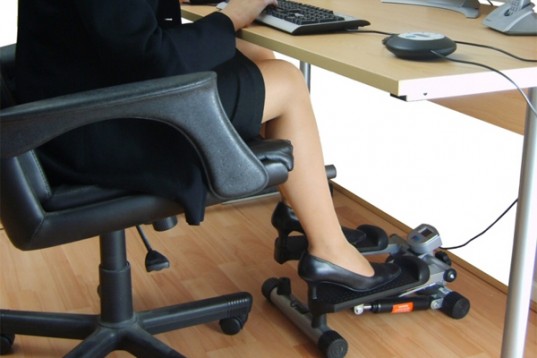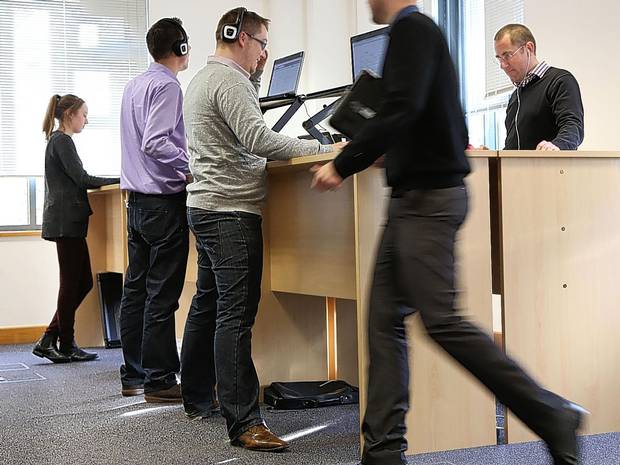HI OPC client, thank you for your inquiry about these new pedaling devices. You have been a perfect student of ergonomics and are aware of the many gimmicks in the marketplace. You are also aware of how sales people sell these items by trying to take advantage of the news headlines which have gone so far as to say “standing will kill you”.
The sale of “ergonomic” products is NOT regulated in Canada, so any company can invent, build and sell an accessory or product and state it is ergonomic in design.

The Ergonomic Team at OPC Inc recommends the application of the science of ergonomics in the workplace.
The science of ergonomics however tells us that the best way for employees to avoid prolonged periods of static sitting time is to;
- Adjust the chair thru the day to bring about more dynamic types of movement while in the chair
- Adjust all adjustable features on the chair at the start of each day to ensure the back and hips are never less than 90 degrees and to ensure there is no pressure between the seat pan and the backs of the legs
- Take reading, telephone and short meeting tasks in standing and ensure these occur in a standing each day
- Take regular and consistent micro-breaks during each day and stand during these micro-breaks
- When taking micro-breaks stretch the body part(s) which tends to give the most discomfort during the day or those which tend to become tense or tight.
- Take lunch and breaks away from your workstation on a consistent basis
- With jobs such as customer care/call centres & production where the nature of the job prevents some of these standing behaviours, ensure Facility Managers and Purchasing provide workstations which allow sitting and standing on a 30 min/30 min basis and use the workstation in this way on a daily basis
- Commence active, fast paced walking during lunch breaks at least 3 days per week for a minimum of 20 minutes (use a comfortable sensation of being out of breath to indicated your heart rate is in a “training zone”.
The use of Treadmills at desks is a hazard and there are NO fitness benefits in using a treadmill. A review of the ISO research and standards on whole body vibration on the other hand does show that walking on a Tread Mill while engaging in fine visual work on the computer or reading is NOT recommended. The whole body vibration at each heel strike will impact the fluid parts of the eyes and can result in blurred vision.
These new “cycle” devices which are now coming onto the market as “ergonomic” are not recommended by the team at Optimal Performance. These devices can result in the knees hitting the under surface of the desks; there is a lack of appropriate back angle when using the pedals for the safe use of these devices; if the employee is using a KB tray there is no room with which to use the pedals; the pedaling of these units does not impact the requirement to stand to unload the discs of the spine; does not take the hip and upper body angle out of the 90 degree angle used in standing; and does not impact the requirement mentally or physically to stand and move away from the seated position.
Bottom line- the 8 steps listed above will lower the employees’ hazard exposure related to prolonged and static sitting. When these are followed on a consistent basis by employees there is no requirement to start using non-evidence based “solutions” such as exercise balls, kneeling stools, cycle units or treadmills.
I hope this helps – I will post this onto our blog so employees can access this should they have questions about how the science of ergonomics is applied in day to day practice in the workplace.
The Ergonomic Team at Optimal Performance



[…] The “cure” for Static Sitting in the Office is NOT through Pseudo-ergonomic devices […]